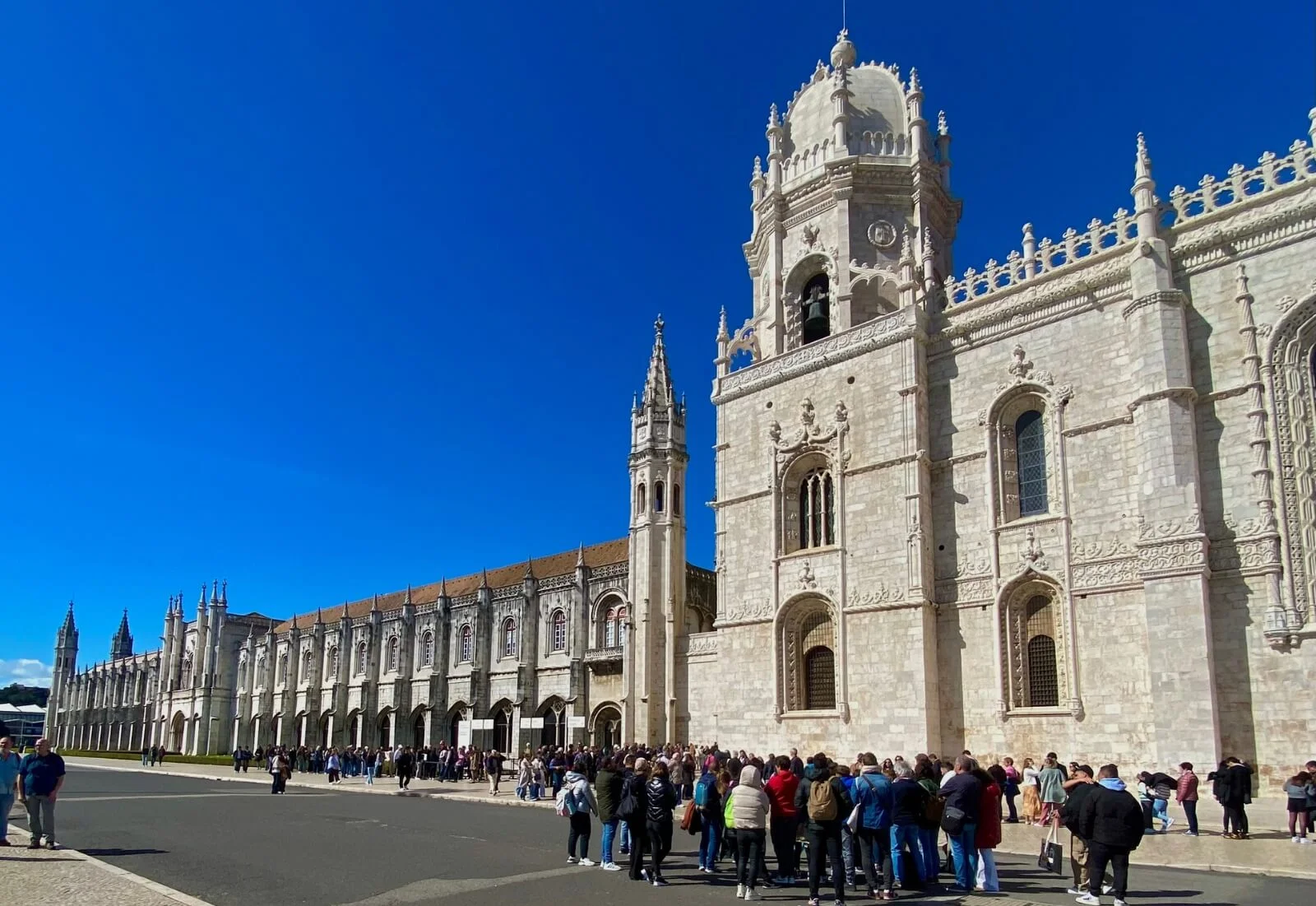

a testimony to the country’s history and architectural prowess
UNESCO World Heritage
The Jerónimos Monastery, a UNESCO World Heritage Site, is a testimony to the country’s history and architectural prowess. This imposing building, built during the 16th century under the patronage of King Manuel I, serves as a lasting tribute to the groundbreaking voyage of Vasco da Gama, the intrepid explorer whose journey to India changed the course of human exploration forever.
The Jerónimos Monastery is a masterpiece of the Manueline architectural style, a unique fusion of Gothic and Renaissance elements that reflects the golden age of discovery in Portugal. Its ornate stone carvings, intricate latticework and soaring arches pay homage to the nation’s daring spirit and relentless pursuit of knowledge and adventure.
In addition to its architectural splendour, the Jerónimos Monastery occupies an important place in Portuguese history. It is the final resting place of Vasco da Gama, the legendary navigator whose voyage paved the way for Portugal’s maritime dominance. The monastery also houses the tombs of other illustrious Portuguese, including King Manuel I himself, whose vision and patronage brought this architectural marvel to life.
Today, the Jerónimos Monastery is one of Lisbon’s most popular tourist destinations, attracting visitors from all over the world who come to marvel at its architectural grandeur and immerse themselves in the spirit of Portugal’s glorious past. Listed as a UNESCO World Heritage Site, the monastery is a testament to the nation’s cultural heritage and its enduring legacy as a centre of exploration and discovery.
The Church of Santa Maria
It was built in the 16th century to commemorate Vasco da Gama’s return from India and houses his tomb. The church is a masterpiece of Manueline architecture, a unique Portuguese style that mixes Gothic, Renaissance and Moorish elements. The exterior of the church is decorated with intricate carvings and sculptures, while the interior is spacious and airy, with a high nave and beautiful stained glass windows.
The Church of Santa Maria is a must-see for any visitor to Lisbon. It is a beautiful example of Manueline architecture and houses a number of important works of art. The church is also a popular venue for weddings and other special events.

The Manueline architecture
The Manueline architectural style, predominant in Portugal during the late 15th and early 16th centuries, incorporates a harmonious blend of Gothic, Renaissance and Moorish influences. This unique style originated during the reign of King Manuel I and flourished as a symbol of Portugal’s power and prosperity during the Age of Discovery. The Jerónimos Monastery, an emblematic landmark of Lisbon, is a masterpiece of Manueline architecture.
Manueline architecture is characterised by its ornamentation, which includes intricate carvings, sculptures and decorative motifs. These elements are inspired by nature, history and the sea, reflecting Portugal’s maritime heritage. The twisted columns, which resemble ropes, symbolise the country’s maritime prowess, while the naturalistic motifs evoke the beauty of the surrounding flora and fauna.
The cloisters
The cloisters of the Jerónimos Monastery are a testimony to the architectural brilliance of the Manueline era. Built in the 16th century, these inspiring cloisters exude an atmosphere of serenity and grandeur. When you enter the cloisters, you are immediately captivated by the details that adorn every nook and cranny. The walls are adorned with delicate lace work, each motif telling a story from the rich history of Portugal and its maritime prowess.
WHAT WE RECOMMEND FOR VISITORS
How to get here
The Jerónimos Monastery is located in the city of Lisbon and is situated in Belém near the Tagus River and close to famous tourist attractions such as the Belém Tower and the Monument to the Discoveries.
Visitors can easily reach the Jerónimos Monastery by bus, train or by car, as there are some car parks nearby. For guests or future guests of the Ajuda Palace Inn, we recommend travelling to the Jerónimos Monastery by public transport such as bus, taxi or uber. If the day allows it and you’re a fan of walking, the distance from our hotel to the Jerónimos Monastery is around 1500 metres on a route through the streets of Lisbon that takes around 24 minutes.


For a complete experience, we invite you to stay at the Ajuda Palace Inn
Lisbon Best Apartments
For a complete experience, we invite you to stay at the Ajuda Palace Inn, a nearby hotel that combines modern comfort with historic charm. Strategically located, the hotel gives you easy access to the Ajuda National Palace and other Lisbon landmarks – We look forward to seeing you soon!
